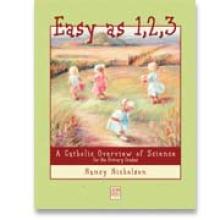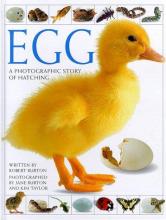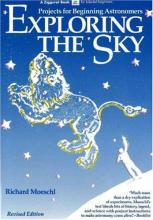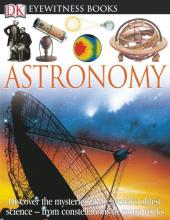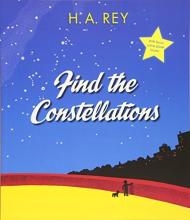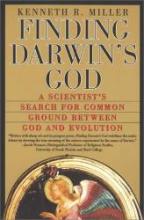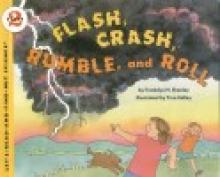Science
Easy as 1,2,3
This is the second edition of a 1998 volume by CHC with the same title. While it has an all-new layout, much of the content remains the same.
Egg: A Photographic Story of Hatching
When you think of eggs hatching, do you tend to think of birds and chicks? Think again! Reptiles, fish and insects can hatch from eggs as well. This book provides the photo stories of the hatching of 27 different animals including Ostrich, Moorhen, Japanese Quail, Starling, Leopard Tortoise, Cornsnake, Leopard Gecko, Ladybug, Common Frog, Great Crested Newt, Goldfish and Kerry Slug. Each hatching includes numerous photos with detailed descriptions of the process and how long it takes. A final photo generally shows the creature a day or two later.
The introductory pages provide comments and illustrations on "What is an Egg?", "Who Has Eggs?", and "The Developing Egg" (with drawings of the development of a baby chick within its egg).
Engineering the City
Reading Level: Ages 9-12
I must admit that this is not a topic in which I am particularly interested. I'm very secure knowing that the water will be available when I turn on a tap or that the bridge I'm driving over will hold me.I'm not sure if I want to know what happens after I flush a toilet or where the garbage goes. That being said, this book helped me to understand these mundane things using terms that are easily understandable, describing activities that encourage further learning, and showing pictures that are clean and clear and make their point.
This book would make a great secondary resource for high school level physics, engineering or civics courses in that it helps define and explain how the things we take for granted work – why there are different bridges for different applications; what the water table is and why it's important; ways and means of transporting citizens; and many other topics. The simple line-drawn diagrams and illustrations ease understanding of some of the more technical information. Published by Chicago Review Press, this book is supposedly for 9-year-olds and up. I think, unless your middle school student is very "into it", this resource would be better suited to high school students. Some of the activities are a bit blah or extremely elementary, but taking into consideration the subject matter, the activities do help illustrate the concept or principle described in the accompanying text.
Chapters include: water, transportation by water, irrigation, different ways of transportation, trains of all types, different styles of bridges, wires/telephones and wireless communication, plumbing and sewers, refuse disposal or reuse, and pollution from acid rain, global warming and water pollution. This book would make a great text for a co-op class of high schoolers; the projects done in a group setting with a bit of competition thrown in. For instance, to illustrate the concepts from the chapter on different styles of bridges, a bridge-building contest using the designs described would be great. This book would also be suitable for ideas for science fair projects.
Exploring the Sky
As your student begins to look skyward and ask questions, take them in one hand and this book in the other! With this book, an assortment of ordinary household things, binoculars or a telescope, and lots of time you can teach a fascinating, hands-on course in beginning astronomy for an entire year. Exploring the Sky is not a textbook. It isn't a storybook. It IS a living book guide to exploring the heavens with an interesting mix of history, biography, folklore, legend, science facts and science fiction, and even some mathematics and art. Obviously written by someone who loves the subject, Exploring the Sky makes the subject come alive.
Introducing a broad range of subjects, this book is organized into seven lengthy chapters with four topical sections each, and a total of seventy-two projects. This is hands-on, time-consuming, attention-grabbing, messy science, not read-about-it science! These sections begin with background information on the topic and at least one project, although most sections include several projects. For example, Chapter 5 is titled "Sky-Gathering Tools". Section 3 is titled "Cameras" and includes presentations on photography with a project on photographing stars and planets, the photoelectric effect, and computers with a project on showing how images are transmitted. This is followed by "Observations", critical thinking questions designed to elicit connections from the student. Often, there are suggestions for additional books to read and browse on the topic as well. Many of the suggested books have copyright dates between 1960 and 1980 and would be best located at the library. It is possible to simply dive in, choose a chapter or a section of a chapter, and begin exploring. The toughest decision is where to begin! How difficult it is to choose among constructing a sundial, demonstrating how the colors of the sky are make, experimenting with prisms, making a model of a black hole, or creating craters on Mercury.
As with all secular books on astronomy, there are references to millions of years of time, but there is no particular emphasis on evolution. Creation legends are retold from cultures as diverse as those of Babylonia, the Norsemen, Mexico, the Maori, and Greece but there is no mention of Christian teaching. Catholic children at this age level shouldn't have trouble making essential distinctions and will probably find value in contrasting this section with the book of Genesis and other sources of Catholic teaching.
This book is noted on the cover as being for "talented beginners", but it is for beginning astronomers who are middle-school-aged students and above, not beginning students in the elementary grades. Basic skill with multiplication and division, as well as the ability to use reference tables that are provided in the book, is necessary to understand some of the projects. Although there are numerous diagrams and sketches, the only thing missing is color photographs. I'm guessing that printing in black and white contributes to keeping such a valuable book so inexpensive. Thus, the only supplements that I suggest are Internet photographs (such as those on the NASA site) or books in Seymour Simon's space series.
Eyewitness: Astronomy
Although most books in the DK Eyewitness series are at least slightly problematic in the text, our family enjoys a number of them entirely for the sake of the pictures. Eyewitness: Astronomy is one of the ones I wouldn't bother with even for the pictures. Although there are many beautiful photos, the book overall is both disappointing and even problematic in places. In looking for a book about astronomy for my children, I wanted something that covered the facts about stars, planets, galaxies, etc., with beautiful photos and interesting text about what science knows (or believes) so far - particularly from the starting point of what children are able to see from their own observation or from straightforward photos and illustrations.
Although there is a certain amount of basic science covered here, I thought there was an exorbitant emphasis on astrology and how it developed into astronomy and a lot of history of science details (some of which is disputable.) I thought the DK Space Encyclopedia (reviewed here) was much nicer (and certainly more thorough) in what it covered and even showed a much fairer hand in dealing with Church-related issues such as Galileo.
Find the Constellations
I've always loved looking at the stars, but have never been able to identify anything but the big dipper on a starry night. For many years, I've wanted to learn more, but with the busyness of life, this goal has long eluded me. Enter ... Find the Constellations by H.A. Rey. Over the past few weeks, my two oldest children and I have started identifying the constellations with the help of this book and The Stars: A New Way to See Them (by the same author). We've had a great deal of excitement and enthusiasm around 10:00 pm when I summon those children who are still awake to see if we can find anything. With flashlight and books in hand we step outside into the dark. We look up and start to focus. After studying the pictures ahead of time, several constellations start jumping out. We move back and forth between book and sky and the excitement increases. Well, we haven't learned lots yet, but we are now able to identify five or six constellations and are slowly increasing our base knowledge.
This simple book is very child-friendly and moves the reader back and forth between what the stars really look like and simple, memorable stick figures to help keep them (and their names) in our heads. One helpful feature in the carefully drawn charts is the differentiation between brighter and less-bright stars (a very important feature in identification). The book includes some quizzes to help children remember the constellations better and, again, differentiate between the stick-figure drawings and the actual "look" of the constellation. The author also includes: some of the stories behind the naming of the constellations; information about the changes in our sky view at different times of the night and different times of the year; tips for star-gazing; and overviews of the planets in our solar system and tips for viewing them. The book wraps up with some interesting information about what it takes to travel to the moon or to Mars as far as distance, speed and navigation goes. He takes this back to the idea of why it is a good thing to learn the constellations.
All of the information in this book is aimed at viewing the night sky with the naked eye rather than a telescope. There is an extensive index in the back which includes the Latin and Greek names of the constellations (such as Ursa Major and Bootes), but the text uses the English names (except for specific names of stars, such as Vega and Arcturus). The book has been revised numerous times since 1954 and the most recent edition includes location of the planets through 2006. Highly Recommended!
Revised many times since original publication, the book details here are for the 2016 edition.
Finding Darwin's God
This book sat on our bookshelf for quite a while, unread. Honestly, I found the title offputting, especially given Charles Darwin's known rejection of God in his own life. Eventually, my husband read it, and encouraged me to do the same. Dr. Miller says that he was perturbed by what he saw as some Christians' distrust of science, displayed specifically in their rejection of evolutionary theories in favor of creationism or intelligent design. This is a particular concern of Miller, who is himself a Catholic and co-author of the popular "Miller and Levine" high-school biology text. This concern spurred him to write this book defending not only the biological theory of evolution but also the idea that science and religion can be compatible. In the introduction, Miller considers the background and the present situation with regard to these issues both in academia and in the culture at large. I appreciated his honest appraisal of the degree to which "the presumption of atheism or agnosticism is universal in academic life ... how common this presumption of godlessness is." (p. 19) In the following chapter, he explores scientific methods, assumptions, and establishing evidence -- specifically considering areas in which direct experimentation and observation are impossible -- using the analogy of detective work. Following this, he very clearly lays out the case for evolution. He also notes the two distinct ways in which the word "evolution" is used: the first means the natural history of life on earth, characterized by change in time, leading gradually to modern species, while the second refers to the mechanism by which this occurred. Thus, he says, "Evolution is both a fact and a theory." It's important to keep both these meanings in mind. In the next three chapters, Miller successively takes on three well-known ideologies opposed to biological evolution, exploring the religious and scientific flaws of each. First, he takes on young-earth creationism. In a series of arguments from the physical sciences, he lays out a concise and compelling argument for an ancient earth. I was especially impressed with the table of radioactive nuclides and its implications. Then comes the section that explains the chapter's title, "God the Charlatan." Here, Miller provides quotes from a staple of creationist literature (Genesis Flood by Whitcomb and Morris) to the effect that God created a young universe with an "appearance of age." In other words, it's all a hoax. The logical implications of this claim both for science and religion are nothing short of intolerable. In Creator & Creation, Mary Daly draws the same conclusion. Next, he takes on critics such as Philip Johnson, who argue that "micro"-evolution is possible, but not "macro"-evolution. This form of Intelligent Design (ID) argues that evolution can produce minor changes within species, but not new species themselves. Logically, therefore, as Miller observes, God (or the Designer) would have to have created each individual species, including thousands of failed, dead-end species. Further, similar species would have to have been placed geographically and temporally close together and in the right sequences, giving the distinct impression of relatedness where, according to this version of ID, none exists. I appreciated the scientific data that Miller provides in this chapter, as well as his analysis of Eldredge & Gould's "punctuated equilibrium" theory. However, I felt that he equivocated on the term "species" and failed to give a solid definition for it. On p 108, he writes "among bacteria, which is to say among most of the cells alive n the planet, it is particularly easy to see that the differences between species are indeed nothing more than the sum total of differences between their genes." This may indeed be true for bacteria, but among higher species chromosomal differences play a vital role, and no amount of mere gene-level mutations would change chromosomes. I would like to have seen at least some discussion of this. The third criticism of evolution he addresses is the form of ID made popular by biochemist Michael Behe in his book Darwin's Black Box: the claim that certain structures within the cell are "irreducibly complex" and therefore could not have evolved but rather had to be designed. Miller acknowledges that the argument from design is not only the oldest, but the "best rhetorical weapon against evolution." Nevertheless, he argues, it comes up short. As a cell biologist himself, Miller points out that some of Behe's contentions are factually incorrect. For example, although the "9+2" flagellar structure that Behe discusses is the most common, many fully functional flagella and cilia exist that are missing many parts of the supposedly "irreducibly complex" 9+2 structure. He also offers some excellent commentary on the clotting cascade. However, I thought Miller was excessively concerned about the negative impact of ID on research, saying for example, "If you believed Michael Behe's assertion that biochemical machines were irreducibly complex, you might never have bothered to check; and this is the real scientific danger of his ideas." To me this seems highly unlikely, since the nature of science is to test ideas -- even accepted ones. Indeed, Miller himself explains earlier in this book that biologists constantly test evolution knowing that the one who can prove it false will earn instant fame. I do not see why this would not apply equally to ID, were it to ever achieve the level of scientific acceptance that evolution has done. In the next few chapters, Miller discusses the "gods of disbelief" that underpin atheistic materialism, and how these assumptions are contradicted by science itself. He addresses the question of God and evolution. Or, if evolution and other scientific theories explain everything, where does God fit in? His elucidation of the implications of the shift from 19th-century scientific determinism to the 20th century's quantum mechanics is enlightening. In essence, quantum effects mean that science cannot, even in principle, deal in certainties. It can never achieve complete knowledge. Quantum indeterminacy breaks the chain of knowledge and causality and thus, Miller says, it also breaks absolute materialism. He then argues that science and religion are not really contradictory, but complementary. He also provides a fascinating analysis of how the concept of evolution is used (inaccurately) by scientists and intellectuals in support of a worldview hostile to God and religion; this worldview, rather than science itself drives many of the underlying concerns of creationists. The author then looks at some of the findings of cosmology, concentrating on the "anthropic coincidences" of our universe. He argues persuasively that the "traditional explanation" for these -- i.e. God -- is every bit as reasonable as any materialist alternative. Indeed, he suggests, the materialists must be getting a little desperate because they are postulating multiple universes. In this chapter, he also explores the role of chance in life, and what that says (or doesn't say) about God. In the final chapter, Miller ties it all together. I loved the part in which he questions the curious inequity whereby scientific theories can be extrapolated "legitimately" to materialism, atheism, and a non-existence of morality, but never in the opposite direction. Or, as Miller has it: "Apparently it is fine to take a long, hard look at the world and assume scientific authority to say that life has no meaning, but I suspect I would be accused of anti-scientific heresy if I were to do the converse, and claim that on the basis of science I had detected a purpose to existence." (p. 269) He's right on. It is refreshing to see a scientist who not only notices the problem but articulates the double standard so clearly.
Although Miller displays a sound understanding of the scientific facts and their implications, his philosophy and theology seem much weaker. Specifically, I believe he is wrong on the following points:
- He writes, "Given evolution's ability to adapt, to innovate, to test, and to experiment, sooner or later it would have given the Creator exactly what He was looking for -- a creature who, like us, could know Him and love Him, could perceive the heavens and dream of the stars, a creature who would eventually discover the extraordinary process of evolution that filled His earth with so much life." (p. 238-9) It seems to me that he is saying that mind and will -- the abilities to know and love God -- are products of the evolutionary process. But aren't they really powers of the soul, and therefore not evolved in any sense?
- Miller also writes that, "No God [sic] could have created individuals who were free to sin but never chose to do so." (p. 253, emphasis in original) He writes this as part of a paragraph making the point that we are the source of sin, not God. This is an excellent, valid point, but it could easily have been made without the additional (and unwarranted) claim that God could not have made us both free and capable of not sinning. In addition to the exceptional case of Mary, we know that God created angels with free will; some of them chose to sin, while others did not. In fact, Miller's statement is actually self-contradictory, as Dr Rioux explained to me.
- He recounts the tale of Fr. Murphy, who spoke to his First Communion class, saying that, "Flowers, just like you, are the work of God." Years later, at a scientific conference during which a presentation explained how plants make flowers, Miller says, "The real message was, 'Father Murphy, you were wrong.' God doesn't make a flower. The floral induction genes do." (pp. 261-2) I found this particularly jarring given the general thrust of the book that evolution is a means that God created to achieve His purposes. The reality is that God makes flowers by the agency of the floral induction genes. Fr. Murphy was right after all.
- I also thought he weaseled on his belief in God when he wrote (at the end of the book) that he believes in "Darwin's God." This may have been intended as merely a clever retort, but I would have been far more impressed if he had confessed belief in the God of Abraham, Isaac, and Jacob. Or better yet, tied the two together.
Finally, although Miller manages to be commendably charitable through most of his book, I was disappointed with his treatment of a quote from Behe's book to the effect that the "intelligent designer" might be a time traveler (p 162). The quote makes Behe appear to be a bit of a flake, but Miller fails to inform his readers that in this section of his book Behe is exploring ways in which a philosophical naturalist might avoid the implication of a Divine Designer, and toward the end says that: "Most people, like me, will find these scenarios entirely unsatisfactory." (Darwin's Black Box, p 249) Similarly, Miller quotes as Behe's definitive position a passage which is actually preceded in the original work by the words: "Perhaps a speculative scenario will illustrate the point." (ibid, p 227) Nevertheless, I recommend this book to Christians who are interested in getting all the facts in the debate surrounding evolution, creationism, and intelligent design.
Flash, Crash, Rumble and Roll
This simple, nicely illustrated (cartoon-like pictures) children's book explains important concepts of science in a very easy-to-understand fashion. The reader is introduced to the way thunderclouds form and where thunder and lightning come from. The scientific content is substantial and very accessible. The story line is rounded out with tips for staying safe during a storm. My children have been fascinated by the details about the inside of a thundercloud, how fast sound and light travel, how you can measure the distance thunder travels and more. This title has been a big favorite with all of my children for a number of years and, rather than being made nervous by the dangers mentioned in the book, a little knowledge seems to be a comforting thing.
Copyrights 1985/1999
For the Beauty of the Earth
Like many Catholic Home schooling families, providing a Catholic education was number one on the list of reasons my husband and I wanted to home school. In addition, we wanted a rigorous education, and one that emphasized the beauties of truth and love. Translating these goals into a curriculum is an on-going challenge. Sometimes the books that do a good job presenting a particular subject do it without the light of the Faith. Other times, books that are "solidly Catholic" are also unattractive and uninspiring. We have had to compromise in a lot of areas.
Two that we have not had to compromise in are science and history, and this is largely due to the Catholic school supplements produced by James Leek. These two are among the most excellent resources I have come across in home schooling. They include interesting material for study and careful explanation of an approach to education that is beautifully in keeping with our holy faith. In themselves, these explanations are worth reading and incorporating into your teaching.
In science, for example, Mr. Leek explains the integrating principles for a Catholic science education. Ultimately, our aim is to better know the Creator of everything. Science study also has remote ends: that we develop a respect for God's creation, and learn to contemplate and reflect on it, and that we exercise our minds to improve life and serve our fellow men. At the same time, science has its proximate and immediate ends: to learn how the world works and to take in sensory data of the physical reality around us.
These principles are very well realized in Leek's science supplement. For the Beauty of the Earth includes a textbook with literary selections organized around the common subject matter of science. The lyrics of the beautiful hymn from which this program draws its title provide the organizing system. In addition to "the beauty of the earth" (weather, metals, energy), we have chapters on "the glory of the skies" (stars, the sun), "hill and vale and tree and flower" "the mystic harmony linking sense to sound and sight" (insects, spiders, mammals), and "the joy of human love" (the senses, emotions, the will.)
The corresponding teacher's guide builds on the readings with questions and activities that take the student from considering the text, to observing the natural world, to admiring God's handiwork, and finally, to the religious analogy. An example to illustrate this progression would be the reading of "Phaeton and Apollo." After the selection is read, the student is asked a series of questions on the text: Who was Phaeton? Describe the court of the sun, etc. Next, students are asked to make some observations about the sun: Where does it rise and set? Does it actually move? What makes it appear to move? Then they are asked to consider the sun's role in life on our planet, and finally, to how the sun is like God, how its marvelous working points to the existence of God.
Questions and activities are broken into grade levels so that this program can be used throughout the elementary years. My first reaction when I looked at For the Beauty of the Earth was to think that this was a liberal arts soft-pedaling of the hard subject of science. But after I carefully read the author's introduction, I decided it could be so much more than that, and it more than met those expectations. We used it alternately with our regular science text, allowing the literary selections and projects to set the tone for our textbook's coverage. Along with enjoying some good stories, memorizing poems and scriptures, doing some fun projects (like building a humane mousetrap), I found that the sense of wonder created through the program carried into the rest of our textbook consideration of each topic. The course is cross-referenced with many of the most popular school science text series from the time it was published (early 1980s).

